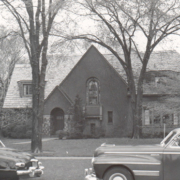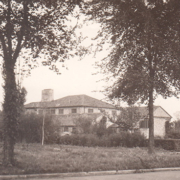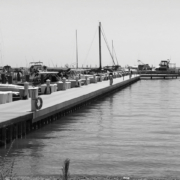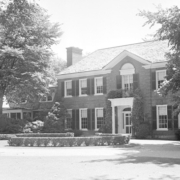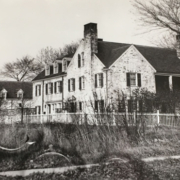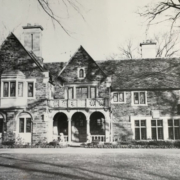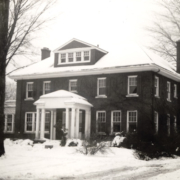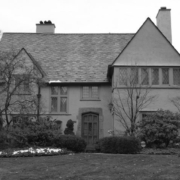Historical Architecture of Grosse Pointe – 1100 Berkshire
Last week we introduced you to 665 Lake Shore, a lost home that was located on the corner of Oxford Road and Lake Shore. The Regency Moderne style property was completed for prolific inventor, Robert Pauli Scherer, in 1951. It was designed by architect Hugh T. Keyes who considered the property to be one of his more significant works. This week we head to a very special home indeed – welcome to 1100 Berkshire, the former residence of Leonard B. Willeke – noted Grosse Pointe architect. Leonard Willeke had a long association with Grosse Pointe Park, aside from the many homes he designed throughout the community, he and his wife, Leona, resided in the city for over fifty years.
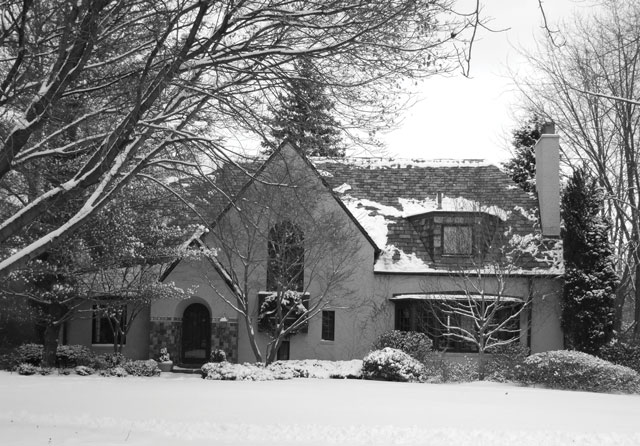
Leonard B. Willeke was one of the most adaptable and prolific architects to work in the Detroit area. He was an extremely versatile designer, capable of creating a house, a piece of furniture, a car or a layout/plan for an entire community; he was an incredibly gifted individual. One might say an unrecognized champion in his contribution to providing Grosse Pointe with some of its more uniquely designed homes. Early on in his career, after holding several senior roles in architectural firms in Cincinnati and Detroit, Willeke established his own practice in Detroit in 1917. He quickly began to work for an array of prestigious clients, including Henry and Edsel B. Ford, Oscar Webber, Charles E Sorensen and Ernest C. Kanzler to name but a few. During some his early commissions Willeke not only designed the house but much of the interior, the hardware, light fixtures, furniture, and in some cases the landscaping. His style was fresh, bold, and very different to the more formal work of architects of that era. Willeke’s experiences in Europe and his craftsman like understanding of materials led him to specialize in fine quality residential buildings, bringing him success in both custom and speculative building ventures around the Detroit area.
In 1922, Willeke began work on 1100 Berkshire, a new 2,974 sq ft home for himself and his wife Leona, located on the corner of Berkshire Rd and St Paul in Grosse Pointe Park.
“Our New place is going to be a beauty, and is located in the finest residential suburb of Detroit, and is very unusual in appearance, done purposely, as it will attract every passerby even though it is very quiet and homelike in its quality, but the form, color, and materials used are of the most unusual kind.” Willeke wrote to a fellow architect in July 1923.
The couple, along with their three-year-old son, had previously resided in an apartment located on Elmhurst Avenue, before moving, in 1920, to a new home he had designed on Moss Street, Highland Park. A couple of years after moving in, Willeke’s career and income was such that he decided to build a larger residence for himself in Grosse Pointe Park. The decision, it is believed, not only made practical sense from a personal point of view, but also business sense – in that it would put him much closer to the lots he had recently purchased on Balfour where he was creating several speculative homes (between 1922 and 1929, Willeke created 7 residences on Balfour that included 4 speculative homes).
Willeke referred to the design of his new home on Berkshire as “Modern English”. The floor plan has a U-shaped configuration, which not only made it compact and convenient but also provided light and excellent air circulation throughout the house. Research from Thomas Brunk’s book ‘Leonard B. Willeke, Excellence in Architecture and Design’ states ‘Willeke designed the home with two main entrances – one at the front and the second at the side, each with direct access to the library’. The research continues to describe the 2,974 sq ft home as ‘having a mahogany paneled library, which served as Willeke’s consultation room’. ‘The first-floor features two levels, the lower level contains the vestibule, main hall, library and the living room, while the dining room, breakfast room, kitchen and living porch are raised (by one foot) and are situated along the back of the house’. The second-floor features 3 bedrooms along with a smaller bedroom for the maid that connects with the kitchen and the rear entrance by the service stairs.

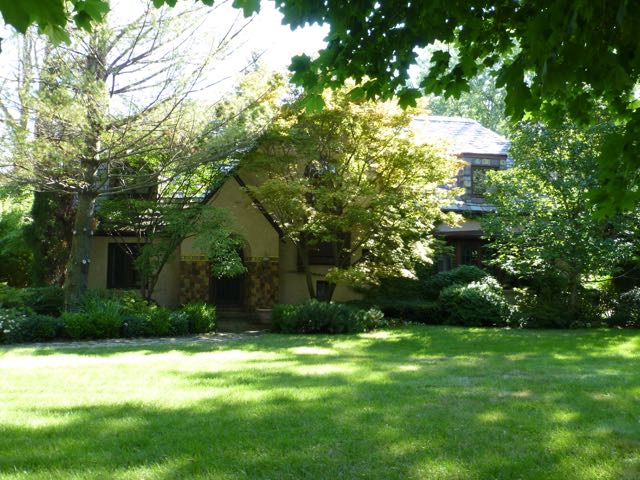

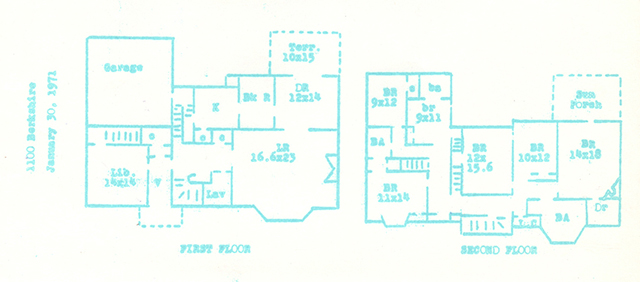
The main hall and living room have barrel-vaulted ceilings. Pewabic tile is used extensively throughout the house (on the floors, fireplaces, and in the main bathroom) while floral and animal motifs are present in much of the paneling, wall trim and the balustrade which is made of red gumwood. The majority of the Pewabic tile is believed to have been custom made by the Pewabic Pottery. Research by Brunk reports ‘the custom made tile incorporated special colors and glazes based on Willeke’s decorative scheme’. Photos courtesy of Katie Doelle.




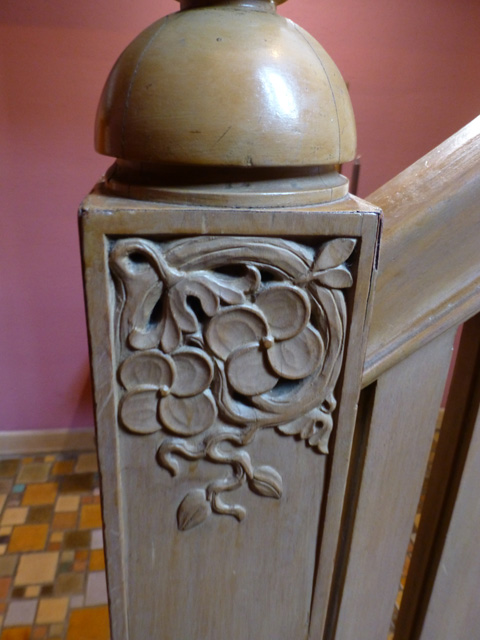

Willeke also designed the garden at 1100 Berkshire – he was a skilled landscape designer. During the 1940’s he collaborated with several leading architects to design the gardens at some prestigious properties – including 226 Provencal, and 315 Washington. For his own garden at 1100 Berkshire, ‘he intended that the garden was visible from all the main rooms in the house’. Thomas Brunk’s research states ‘major plantings were selected for the beauty of their branch structure’. Brunk also confirms that Willeke incorporated many special features and artistic designs into his new residence, many of these were based on the sketches he had compiled during his years of travel and study abroad.
Construction on the Willeke’s new home began in November 1922, and the family moved in during the summer of 1923 – it was intended to be his final home. However, several years’ later, in 1932, money troubles brought on by the great depression resulted in Willeke having to move out of 1100 Berkshire. The family moved to a small apartment on Village Lane to weather the worst of the financial storm. Thankfully things began to improve in 1934, when he began to receive some small remodeling jobs followed by several new commissions.
In 1938, with his career back on track, Willeke set about building himself a new home and studio at 1142 Bishop Road. Research from Brunk states that ‘while Willeke still owned the house on Berkshire, he no longer wished to live in a home that large’. It appears Willeke rented the property for many years. In 1953, Willeke completely renovated 1100 Berkshire at a cost of $7,000 (around $74,000 today). It was then sold to Mr. and Mrs. William B. Elmer. In April 1957, after the sale, Willeke wrote a lengthy letter to the Elmer’s detailing every inch of the property with the intention of being of assistance to them in maintaining and operating the house. The Elmer’s resided at 1100 Berkshire for many years. It was then sold to the current owner, Margot C. Parker, who has lived in her treasured Willeke home for 44 years.
*Photos courtesy of the Higbie Maxon Agney archives unless stated.
** Research, information, and data sources are deemed reliable, but accuracy cannot be fully guaranteed.
Written by Katie Doelle
Copyright © 2022 Katie Doelle

